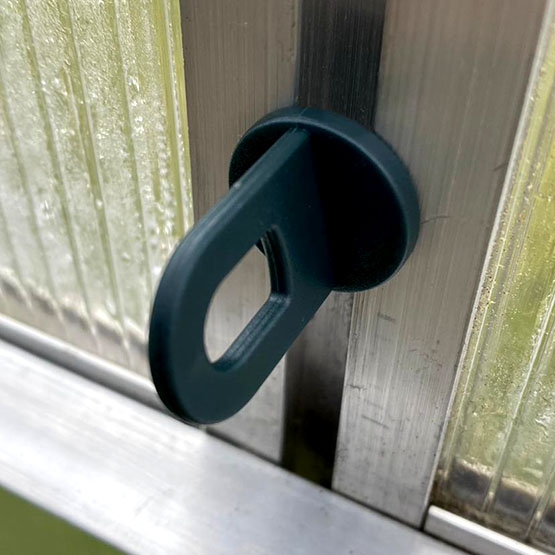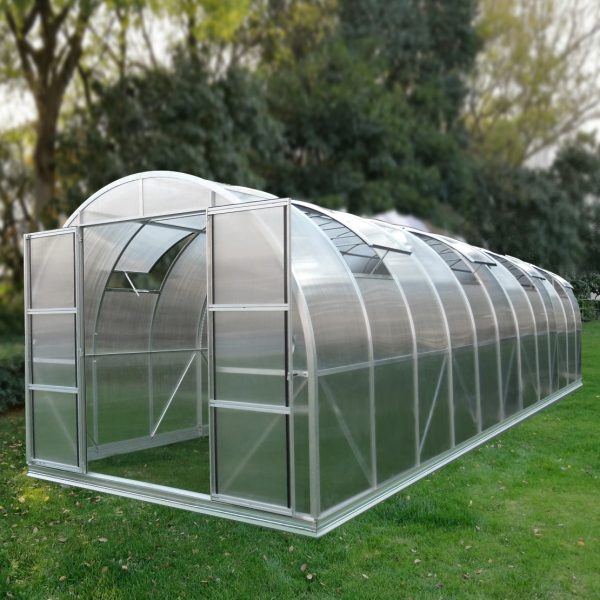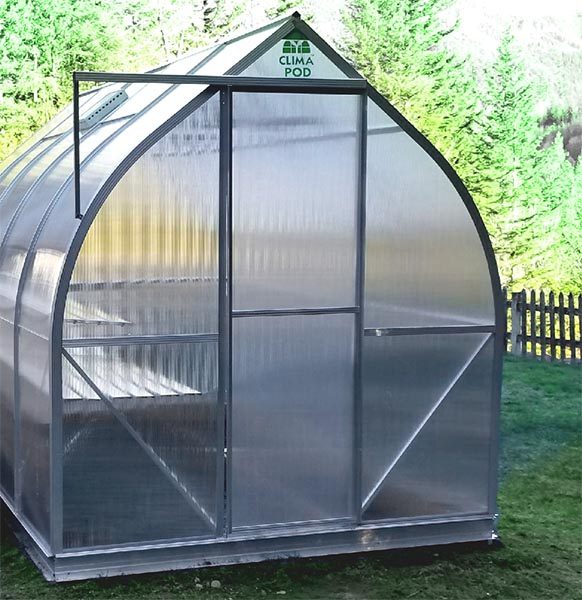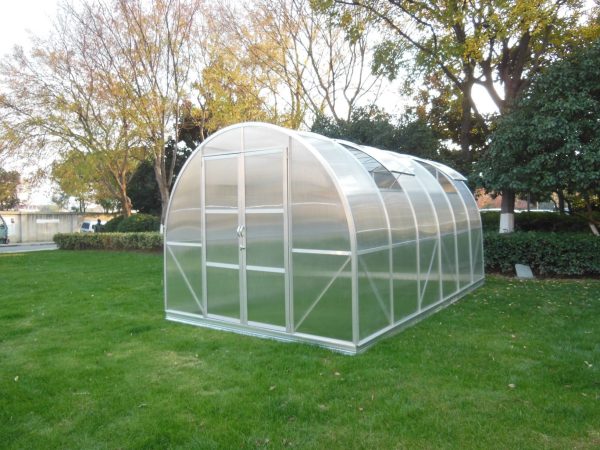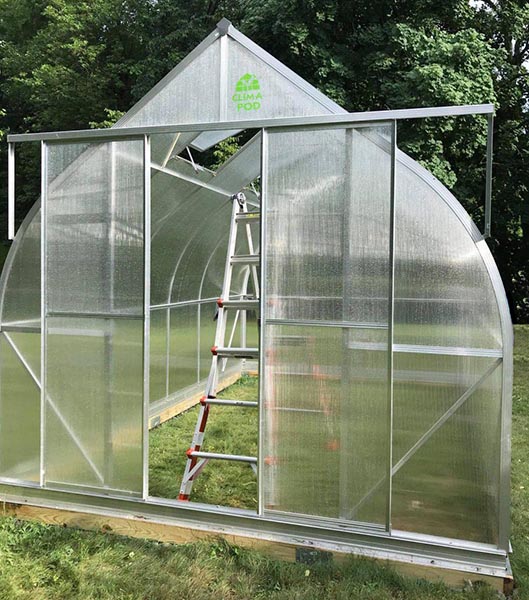In late spring, when the earth has warmed up enough, almost any gardener might say that it is common to plant the seedlings in the open ground in your yard. Some people say that you can forget about your greenhouse until it gets cold. We say – don’t be in a big rush. The key feature of the greenhouse is that it can and has to be used year-round. The main thing is to correctly use the summer greenhouse and create an optimal microclimate for your plants.
Why is it Beneficial to Use a Greenhouse in the Summer?
In summer, depending on the region where you live, the weather usually gets very hot. But on occasion, your area might get a mother nature’s surprise. A storm, unexpected temperature drop, drought, or prolonged rains – any of these weather changes can affect if not destroy your crop. During such weather conditions, most of the plants planted outside will experience significant stress: cucumbers fade, tomatoes turn black, dill and salad dry up, and berries grow too small and watery.
In the greenhouse you can control the climate conditions. Darken if necessary by using shade cloth, continuously ventilate during the hottest days of summer, protect your plants from gusts of high winds and rain, and at the same time keep maintaining needed humidity levels. In addition, the weeds won’t be a big issue since they would grow more reluctant, and there definitely be much fewer pests
All these artificially created conditions favor gardening activities. Even with limited growing space, you can grow a crop that gives the same way if not times higher than the yield obtained on the open ground. Not to mention that you can harvest several times during the summer.
Greenhouse Temperature
Greenhouse temperature is another critical environmental factor that can influence the growth and survival of greenhouse crops. Generally, there are three types of temperature levels (aka cardinal temperatures) when it comes to growing any greenhouse crop: minimum, optimum, and maximum temperature.
Crop Temperature Requirements
There are different temperature requirements for the plants to grow in a greenhouse. And every greenhouse crop has a specific temperature condition at which the growth and development of the plant are the best.
For each crop, there are three cardinal temperatures to grow. The minimum cardinal temperature is the lowest possible temperature to grow a crop. The optimum cardinal temperature is the ideal temperature which is the most suitable condition to grow a specific crop. Finally, the maximum cardinal temperature is the warmest environmental conditions at which crop growth can occur.
What Happens to Crops When Temperatures Are High
When the temperature inside the greenhouse gets higher than the ideal temperature (optimum cardinal temperature the plant growth is adversely affected. Maximum cardinal temperature is the highest temperature at which a greenhouse crop can survive and grow. Any temperature which is above the maximum cardinal temperature can possibly kill the crop.
There are many scientific studies that prove that high temperature, whether it is transitory or remains constant, can cause biochemical, physiological, and molecular changes that negatively affect the plant’s growth and productivity by reducing the process the photosynthesis.
How to Keep Your Greenhouse Cool in Summer?
Greenhouse ventilation systems play an important role to maintain and control the heating of the greenhouse. A greenhouse works by trapping the sunlight inside the greenhouse resulting in an increase in the temperature. It is also known as the greenhouse effect.
During summer the temperature inside the greenhouse may get too hot for certain plants and crops. The high temperature inside the greenhouse can cause unfavorable growing conditions. Hence the excess heat must be removed from the greenhouse using the ventilation systems
What Can I Grow in a Greenhouse in the Summer?
In the summer greenhouse, you can grow almost anything. But is it worth the hassle of potatoes, carrots, or beets, if those specific veggies can grow just fine in the open yard?
For your summer greenhouse, it’s better to switch to plants that could sustain the heat and bring you plenty of crops. Tomatoes, peppers, eggplant, beans, and other heat-loving plants, raised in the soil from early spring, could be the best choice for your summer greenhouse garden. As long as they have plenty of moisture in the soil, they will continue to produce throughout the summer in a warm greenhouse. Here are a few other plants that could perfectly fit in your summer greenhouse:
- Greens are always needed too. Yes, they can grow just fine under the open sky with good weather but if planted in a greenhouse – they could grow much faster.
- Salad. Seedlings are not needed, you can plant a salad every 2 weeks. Provided that the temperature is right in the greenhouse, it also grows very quickly. Some note of care – water right under the root, without getting on the leaves, loosen the ground and weed the soil. Do not plant salad in a heap. Varieties: lettuce, romaine, asparagus salad, cabbage, watercress.
- Strawberries love well-lit places, warmth, and loose soil. That is why it’s good to mix the soil with peat. On the open ground, it grows in one tier. In the greenhouse, you can use the “block method”. Strawberries are planted in garden boxes and then put on the rack in several layers. If you don’t get enough light during the day, we recommend using artificial LED grow light. Carry out a system for drip irrigation in order to simplify your care. If the conditions are met, you can get over 100 lbs of harvest in the greenhouse.
- Dill has a very capricious culture, and therefore perfect for growing in a greenhouse during summer. It needs good lighting, a temperature level of at least 60 degrees F (15 C), and well-moistened soil. Dill grows for about 2 months. But it’s worth it since with 10 square feet of grow space you can collect up to 5 lbs of this green seasoning, periodically cutting off the green tops.
- Parsley. It grows either by sowing seeds, and after germination in a wet cloth planted into the soil, or planting root crops to a depth of 6 inches, with the step between the roots of about 2 inches. Throughout the summer using the first method you can get over 3 lbs of harvest per 10 sq. ft. of to grow space. The second method is a bit more difficult, but it would be more resistant. Care for parsley is simple – weeding, watering and properly ventilating.
- Green Onions. Before planting, make sure the soil is loosened, fertilized, and leveled. Plant the seedlings with 1- inch steps between each. In order to support the quick growth of spouts, they can be covered with thatch straws mixed with manure.
Each plant has its own tricks for most optimal growing in summer. But all of them have something in common – they all need good air ventilation, weeding (if necessary), watering, temperature control, and soil feeding.
6 Greenhouse Tips for Summer Gardening and Cultivation
Plan for Weeds!
Even in the most well-kept greenhouse gardens, it is nearly impossible to stop the weed from growing. During the warm summer season, weeds grow at a much faster rate than hurt your summer cultivation. It is recommended to apply mulch to the soil to prevent weeds from growing. Alternatively, you can also weed mats
Fertilize
Most soil types do not contain an adequate amount of important nutrients that are required by the plants and flowers to grow. Fertilizers provide the crops with essential nutrients like nitrogen, potassium, and phosphorus, helping them grow bigger, faster, and yield higher.
There are different types of organic and inorganic fertilizers available in the market such as nitrogenous fertilizers, phosphate fertilizers, potassic fertilizers, etc. Make sure you consult a greenhouse gardening expert and ask which type of fertilizer will work the best for your crops.
Prepare the Soil for Gardening
Prepare your greenhouse by properly tilling the soil. Tilling helps to break up and soften the soil which allows water and nutrients to spread throughout the soil. It also helps the roots to develop and spread quickly. You may also consider adding fertilizers while tilling the soil. You can also add other organic materials, like vegetable skins, fruit skins, or eggs waste to provide more nutrients for the soil.
Remove Dying Leaves
There are two main reasons why it is important to remove dying leaves:
- Removing the dying leaves will free up nutrients that can be used by the rest of the plants where they’re needed most
- Dead leaves can also happen due to various diseases or pest problems. Removing them may prevent the spread of the diseases to other parts of the plant
If the leaf is still green, don’t remove them from the plant or flower. Remove the dying and brown leaves only if they’re more than 50% damaged
Apply Mulch
Applying mulch to your greenhouse has certain pros and cons. Mulch can help you conserve water by reducing the evaporation from plants. Mulching also prevents the growth of weeds by blocking their access to sunlight.
Be extra careful when you apply mulch in your greenhouse because excessive mulch can overheat and suffocate the soil. Moreover, mulch can create a suitable habitat for slugs, mold, and bugs.
Keeping the Greenhouse Cool
As explained earlier in the blog, it is normal for the greenhouse to get too hot during the summer season! Be careful and monitor the temperature during extremely warm summer days because the temperature in your greenhouse can increase rapidly
Maximum cardinal temperature can adversely affect the growth of the greenhouse crop by reducing photosynthesis. Too hot temperature which is above the maximum cardinal temperature can possibly kill your greenhouse crops.


